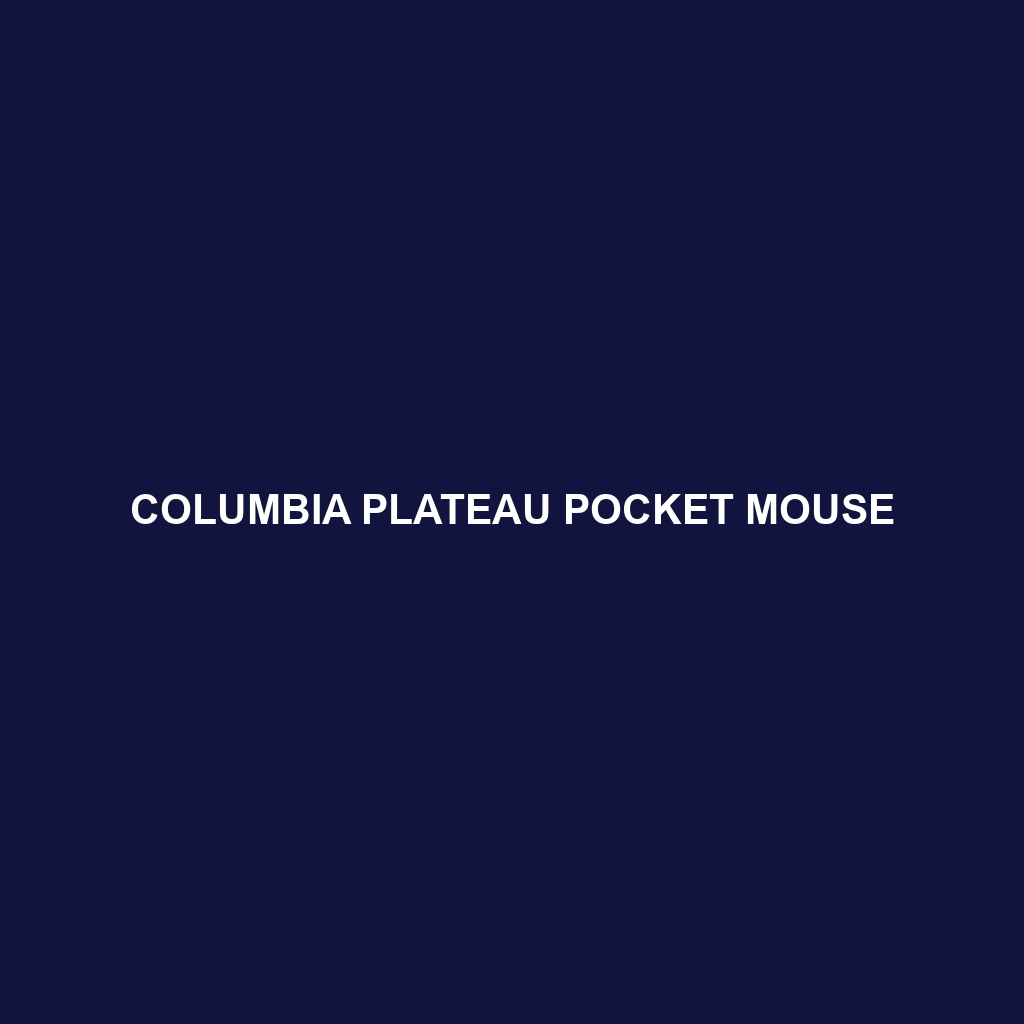Columbia Plateau Pocket Mouse
Common Name: Columbia Plateau Pocket Mouse
Scientific Name:
Habitat
The Columbia Plateau Pocket Mouse primarily inhabits the arid regions of the Columbia Plateau, which spans parts of eastern Washington, northeastern Oregon, and southwestern Idaho. This species prefers environments such as sagebrush steppe, grasslands, and shrublands where loose, sandy soils are prevalent. These habitats provide essential cover and nesting sites for survival.
Physical Characteristics
The Columbia Plateau Pocket Mouse is a small rodent typically measuring between 8 to 10 inches in length, including its long tail. It features a soft, dense fur coat, which varies in color from light brown to tan, often with a lighter underside. Its large eyes and ears are distinctive traits adapted for nocturnal activities, while its cheek pouches allow for efficient food storage.
Behavior
This pocket mouse is predominantly nocturnal, becoming active during the cooler evening hours. It exhibits solitary behavior and is known for its burrowing habits, creating complex networks of tunnels to escape from predators and to store food. Additional behaviors include territorial marking and vocalizations for communication during mating seasons.
Diet
The diet of the Columbia Plateau Pocket Mouse primarily consists of seeds, fruits, and vegetation. It is particularly fond of grass seeds and has developed behaviors that allow it to consume and store food efficiently for times of scarcity. This species plays a crucial role in seed dispersal within its habitat, contributing to plant biodiversity.
Reproduction
Columbia Plateau Pocket Mice have a breeding season that typically occurs from late spring to early fall. Females give birth to litters ranging from two to five offspring after a gestation period of about three weeks. Young mice are weaned after a few weeks and begin to explore their surroundings shortly thereafter, learning essential survival skills from their mother.
Conservation Status
As of the latest assessments, the Columbia Plateau Pocket Mouse is classified as a species of concern due to habitat loss and fragmentation. The species faces threats from agricultural expansion and urban development, which have contributed to its vulnerable conservation status. Continued monitoring and habitat preservation efforts are crucial for its survival.
Interesting Facts
The Columbia Plateau Pocket Mouse has a unique adaptation for survival in its harsh environment. Its ability to store food in its cheek pouches not only aids in individual survival but also benefits other organisms as seeds are accidentally dispersed. Additionally, this species can survive long periods without direct access to water, deriving moisture from its food.
Role in Ecosystem
The Columbia Plateau Pocket Mouse plays a vital role in maintaining the ecosystem balance. As a seed disperser, it helps promote plant growth and diversity within its habitat. Furthermore, it serves as a food source for various predators, including snakes, birds of prey, and larger mammals, thus supporting the food web in the Columbia Plateau region.
